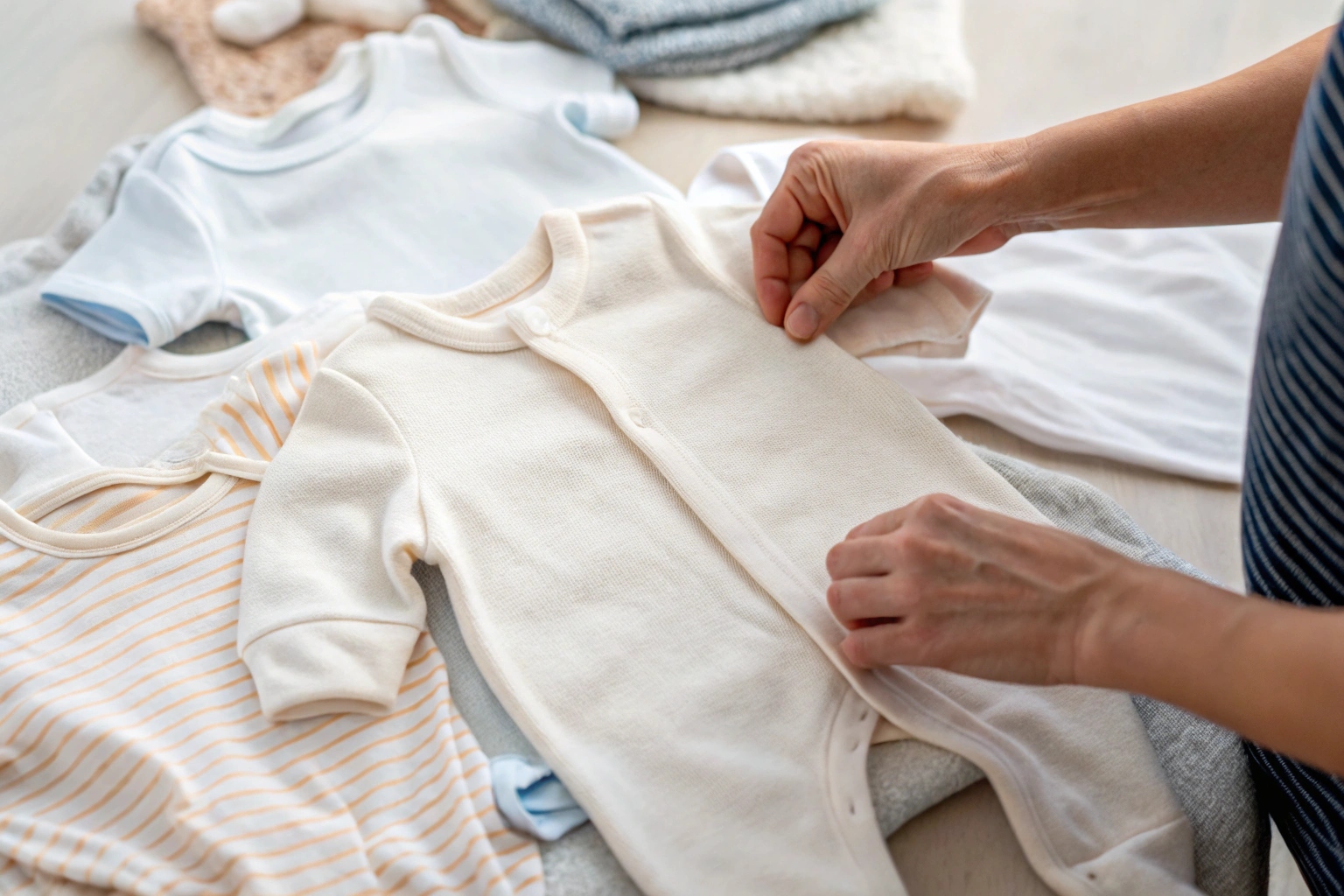With so many cute baby clothes out there, it’s easy to get overwhelmed. But when it comes to newborns, comfort and practicality matter most.
The best newborn baby clothes are soft, breathable, easy to change, and made from safe fabrics like organic cotton. Focus on essentials, proper sizing, and trusted brands recommended by real parents.
Let’s break down exactly what you need—and what to look for—when dressing a newborn.
Best Fabrics for Soft and Breathable Newborn Clothing?
Newborn skin is delicate and sensitive. What touches it every day should be gentle, safe, and breathable.
The best fabrics for newborn clothes are organic cotton, bamboo rayon, and soft jersey knit. These materials are breathable, hypoallergenic, and gentle on baby skin.
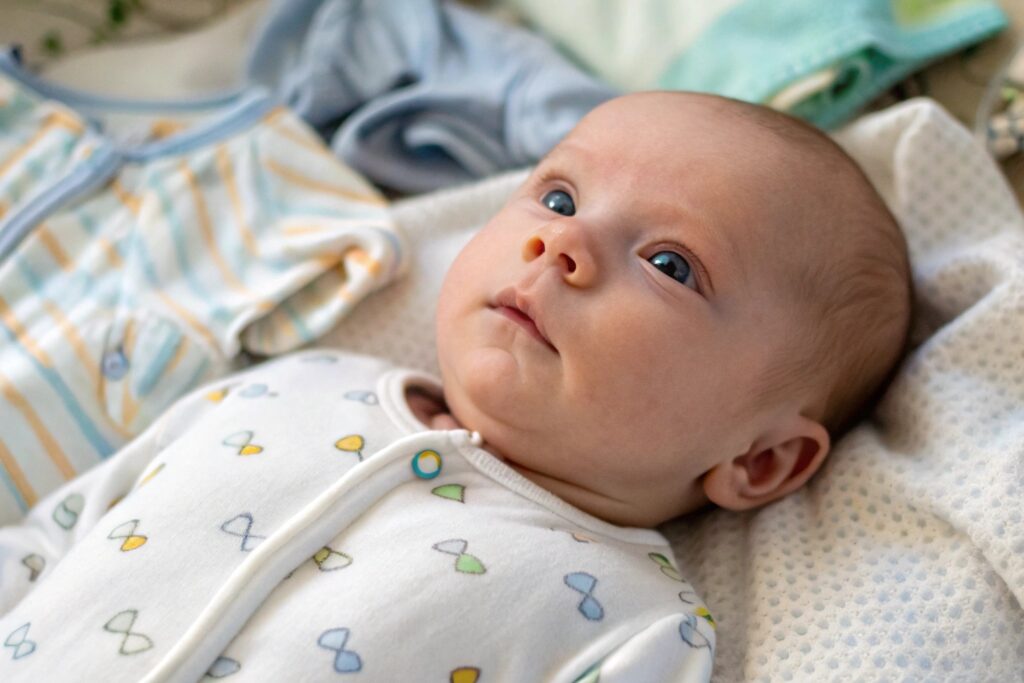
Why is fabric choice so important for newborns?
Newborn skin is thinner than adult skin and more prone to rashes or irritation. Fabrics with harsh chemicals, synthetic dyes, or rough textures can cause discomfort, especially during long naps or swaddling.
Here’s how common fabrics compare:
| Fabric Type | Pros | Cons |
|---|---|---|
| Organic Cotton | Soft, chemical-free, breathable | Can be pricier |
| Bamboo Rayon | Silky feel, thermal regulating | Often blended with synthetics |
| Jersey Knit | Stretchy and comfy for movement | Quality varies by brand |
| Polyester | Durable, cheap | Traps heat, less breathable |
| Fleece | Cozy for winter | Not for direct skin contact |
Choose natural, breathable options for base layers—like bodysuits and pajamas—and avoid synthetic-heavy blends in anything worn directly on the skin.
Must-Have Clothing Essentials for the First Few Months?
Babies grow fast—but for the first 0–3 months, you’ll reach for the same cozy, easy-to-use pieces every day.
The best newborn clothing essentials are bodysuits, footed sleepers, side-snap shirts, hats, mittens, and swaddles. Focus on soft materials and easy access for diaper changes.
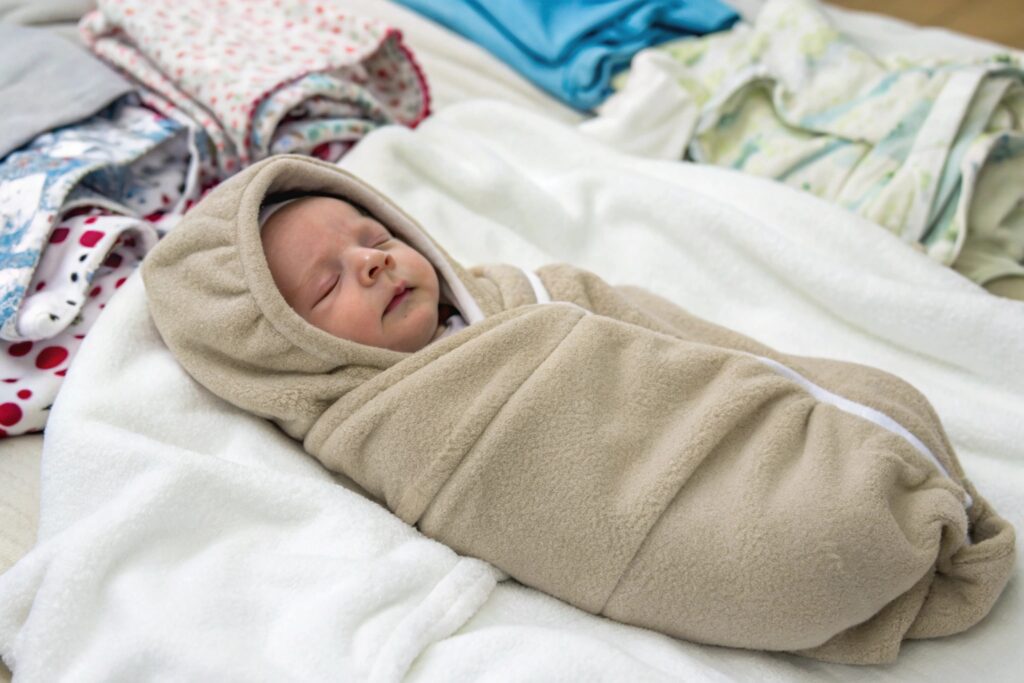
What’s the ideal newborn clothing checklist?
Here’s a practical breakdown of what most parents find useful:
| Clothing Item | Quantity | Notes |
|---|---|---|
| Bodysuits (short & long-sleeve) | 6–8 | Go for envelope shoulders for easy dressing |
| Footed Sleepers / Pajamas | 4–6 | Zip-up styles save time at night |
| Side-snap or kimono shirts | 3–5 | Ideal for umbilical cord healing |
| Soft pants / leggings | 3–4 | Pair with bodysuits for daytime wear |
| Newborn hats | 2–3 | Regulate warmth in early weeks |
| Scratch mittens | 2 | Prevent face scratches |
| Swaddles / sleep sacks | 3–4 | Help baby feel secure and sleep longer |
Pro Tip: Choose neutral colors and gender-neutral prints for easy mix-and-match and hand-me-down potential.
What features make newborn clothes easier to use?
- Zippers over snaps (especially for sleepwear)
- Fold-over mittens built into sleeves
- Envelope necks for easy over-the-head or pull-down removal
- Built-in feet to avoid lost socks
Simple = sanity-saving.
How to Choose the Right Size for a Newborn Baby?
Newborn sizes don’t always match your baby’s weight or length perfectly—and babies grow faster than you think.
Choose newborn clothes based on weight and fit—not just age labels. Many parents size up to 0–3 months for comfort and longevity.
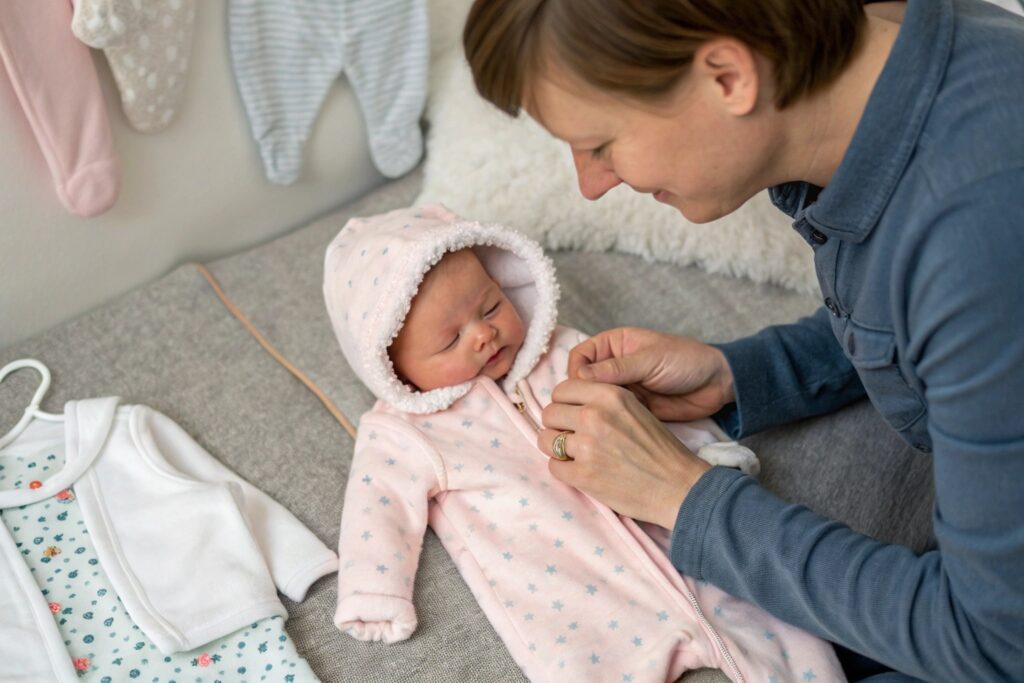
What sizes are available for newborns?
| Size Label | Approx. Weight Range | Fit Notes |
|---|---|---|
| Preemie | Under 5 lbs (2.2 kg) | For early/small births |
| Newborn (NB) | 5–8 lbs (2.2–3.6 kg) | Fits most babies for 2–3 weeks |
| 0–3 Months | 8–12 lbs (3.6–5.4 kg) | Best for most average-size newborns |
| 3–6 Months | 12–16 lbs (5.4–7.3 kg) | For bigger babies or early growth |
If your baby is born full-term and over 8 lbs, NB size may last only a week or two. That’s why many parents skip straight to 0–3M for everyday wear.
Tips for buying the right size:
- Buy fewer items in NB and more in 0–3M
- Check brand-specific size charts—they differ more than you think
- Focus on stretchable fabrics that adjust as baby grows
- Consider layering—a slightly big romper over a snug bodysuit can work perfectly
Top-Rated Babywear Brands Recommended by Parents?
The market is full of options, but some babywear brands stand out for their softness, quality, and value.
Popular babywear brands among parents include Carter’s, Burt’s Bees Baby, Hanna Andersson, L’ovedbaby, and Primary. They offer great fabrics, smart features, and consistent sizing.
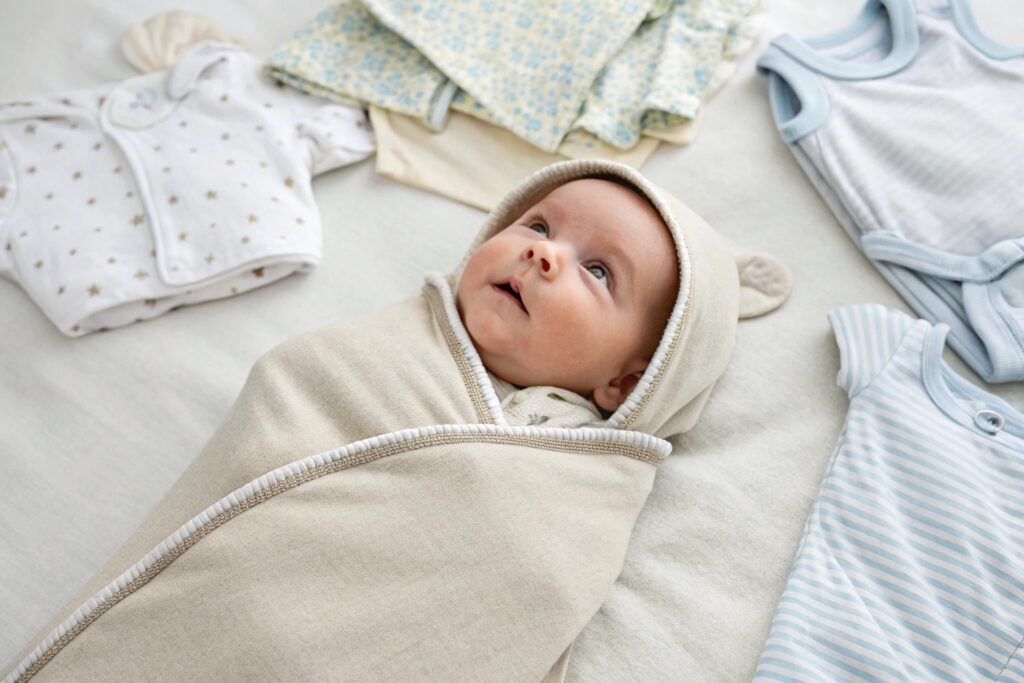
What are some trusted newborn clothing brands?
| Brand | Known For | Price Range |
|---|---|---|
| Carter’s | Affordable, accessible, great sizing | $ |
| Burt’s Bees Baby | Organic cotton, gentle on skin | $$ |
| Hanna Andersson | High-quality knits, great prints | $$$ |
| L’ovedbaby | GOTS-certified organic, snug fit | $$$ |
| Primary | Simple, bold colors, gender-neutral | $$ |
| H&M Baby / Zara Baby | Trendy, budget-friendly options | $–$$ |
Each brand offers different strengths. If softness and organic material are a priority, Burt’s Bees or L’ovedbaby are great. For everyday bulk buys, Carter’s offers unbeatable value.
Where to shop?
- Online: Amazon, Target, Babylist, brand websites
- Retail: Carter’s, Old Navy, BabyGap, department stores
- Secondhand: Facebook Marketplace, ThredUp, local swaps—babies outgrow clothes fast!
Conclusion
The best newborn baby clothes are soft, safe, simple, and easy to use. Stick with breathable fabrics like organic cotton, stock up on essentials like bodysuits and sleepers, and choose sizes and brands that match your baby’s needs—not just the tag. Your little one’s comfort starts with smart choices—and you’ve got this.

